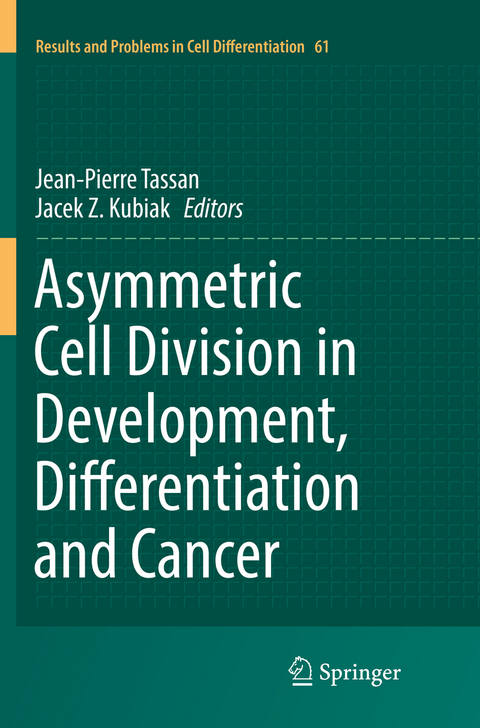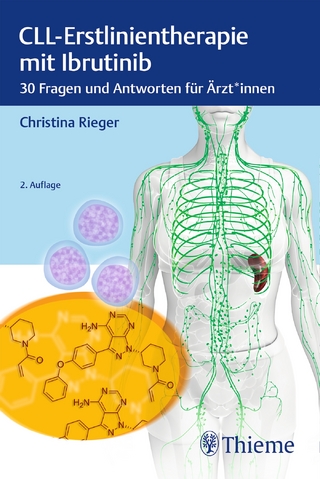
Asymmetric Cell Division in Development, Differentiation and Cancer
Springer International Publishing (Verlag)
978-3-319-85077-1 (ISBN)
This book provides readers with an overview of the frequent occurrence of asymmetric cell division. Employing a broad range of examples, it highlights how this mode of cell division constitutes the basis of multicellular organism development and how its misregulation can lead to cancer.
To underline such developmental correlations, readers will for example gain insights into stem cell fate and tumor growth. In turn, subsequent chapters include descriptions of asymmetric cell division from unicellular organisms to humans in both physiological and pathological conditions. The book also illustrates the importance of this process for evolution and our need to understand the background mechanisms, offering a valuable guide not only for students in the field of developmental biology but also for experienced researchers from neighboring fields.
1 Modeling Asymmetric Cell Division in Caulobacter crescentus Using a Boolean Logic Approach.- 2 Spatiotemporal models of asymmetric cell division cycle in Caulobacter crescentus.- 3 Intrinsic and extrinsic determinants linking spindle pole fate, spindle polarity and asymmetric cell division in the budding yeast S. cerevisiae.- 4 Wnt signaling polarizes C. elegans asymmetric cell divisions during development.- 5 Asymmetric cell division in the one-cell C.elegans embryo: multiple steps to generate cell size asymmetry.- 6 Size matters: how C. elegans asymmetric divisions regulate apoptosis.- 7 The midbody and its remnant in cell polarization and asymmetric cell division.- 8 Drosophila melanogaster neuroblasts: a model for asymmetric stem cell divisions.- 9 Asymmetric divisions in oogenesis.- 10 Asymmetric localization and distribution of factors determining cell fate during early development of Xenopus laevis.- 11 Asymmetries in cell division, cell size and furrowing in the Xenopuslaevis embryo.- 12 Asymmetric and unequal cell divisions in ascidian embryos.- 13 Asymmetries and symmetries in the mouse oocyte and zygote.- 14 Symmetry does not come for free - cellular mechanisms to achieve a symmetric cell division.- 15 A Comparative Perspective on Wnt/beta-catenin Signalling in Cell Fate Determination.- 16 Extracellular regulation of the mitotic spindle and fate determinants driving asymmetric cell division.- 17 Regulation of asymmetric cell division in mammalian neural stem and cancer precursor cells.- 18 Molecular programs underlying asymmetric stem cell division and their disruption in malignancy.
| Erscheinungsdatum | 05.03.2022 |
|---|---|
| Reihe/Serie | Results and Problems in Cell Differentiation |
| Zusatzinfo | VI, 421 p. 96 illus., 81 illus. in color. |
| Verlagsort | Cham |
| Sprache | englisch |
| Maße | 155 x 235 mm |
| Gewicht | 6438 g |
| Themenwelt | Medizin / Pharmazie ► Medizinische Fachgebiete ► Onkologie |
| Naturwissenschaften ► Biologie ► Genetik / Molekularbiologie | |
| Naturwissenschaften ► Biologie ► Mikrobiologie / Immunologie | |
| Naturwissenschaften ► Biologie ► Zellbiologie | |
| Schlagworte | asymmetric cell division • cancer etiology • Cell Cycle Analysis • cell division • Differentiation • Embryo development • Stem Cells |
| ISBN-10 | 3-319-85077-6 / 3319850776 |
| ISBN-13 | 978-3-319-85077-1 / 9783319850771 |
| Zustand | Neuware |
| Informationen gemäß Produktsicherheitsverordnung (GPSR) | |
| Haben Sie eine Frage zum Produkt? |
aus dem Bereich


